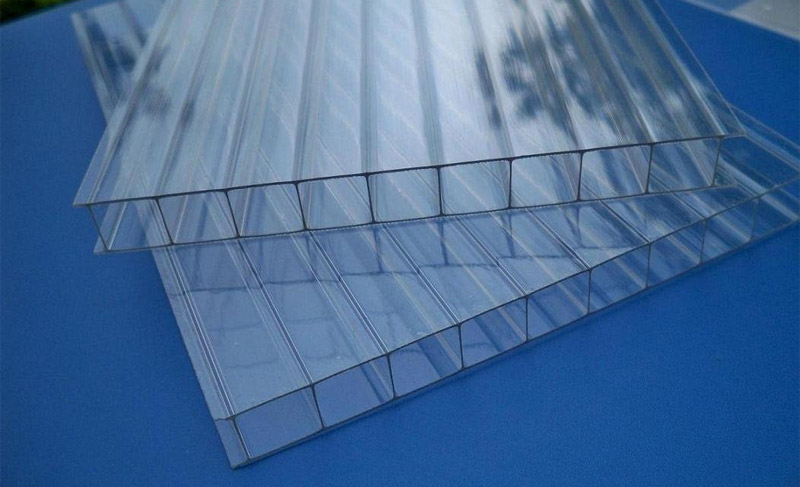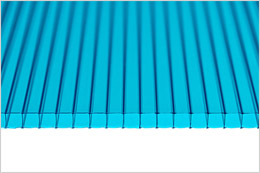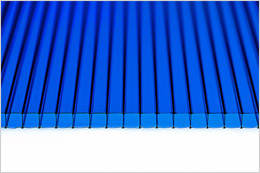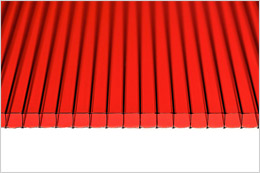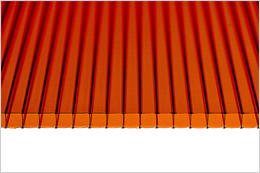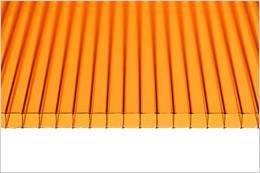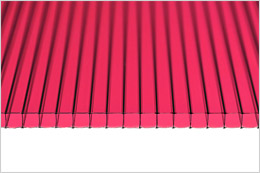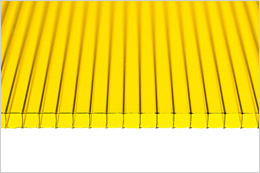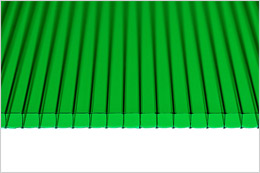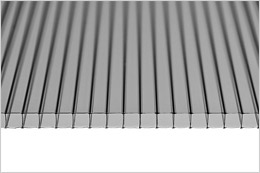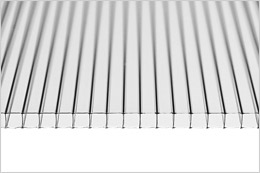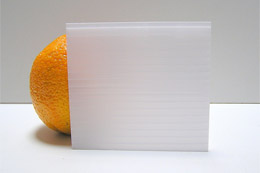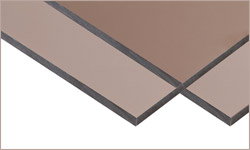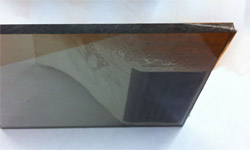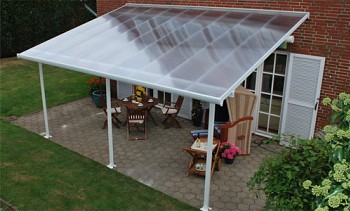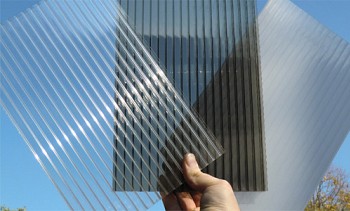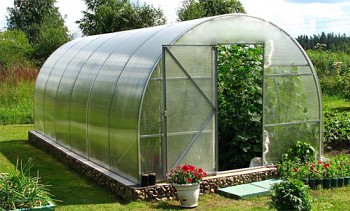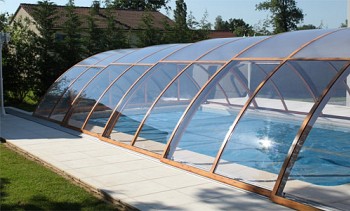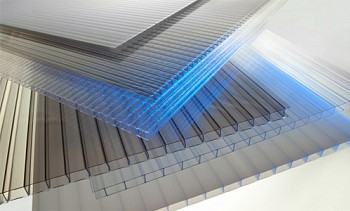Types of polycarbonate: structure, sizes and colors of sheets
Polycarbonate is one of the new building materials that appeared on the market about twenty years ago. This polymer from the family of thermosetting plastics looks very decorative and has good strength. Various types of polycarbonate are used in all areas of construction - both industrial and private. And the richness of colors and the variety of sizes make it possible to realize any idea.
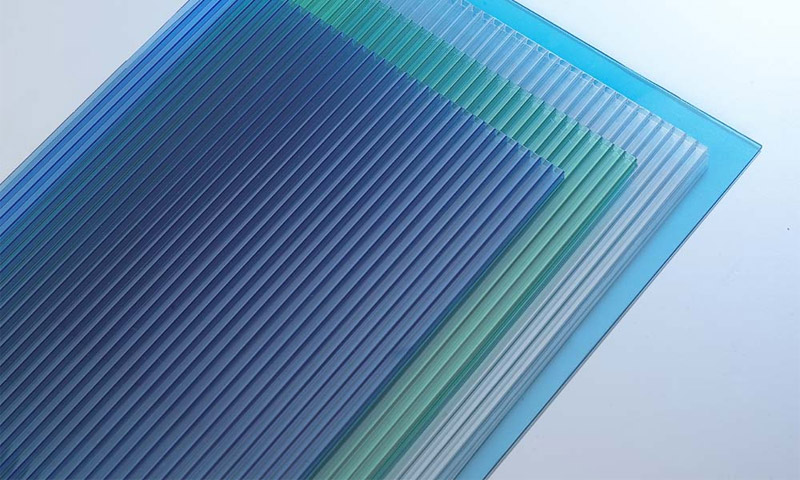
Content:
Types of polycarbonate sheet device
To begin with, this material can be solid or cellular in its internal structure. Accordingly, the sheet structure of these two varieties will be different. Consider what exactly.
Cellular Polycarbonate
Looking sideways at a sheet of cellular polycarbonate cut across, you can see a pattern resembling a honeycomb. It is formed by stiffeners installed obliquely or directly. The result is a triangular or rectangular cell containing air and giving this polycarbonate special properties: noise insulating, heat insulating, strength.
His sheets are issued with the following structure:

2H - two-layer panels with rectangular honeycombs inside. With a thickness of 0.4 to 1 centimeter, the stiffeners are ordinary partitions.

3X - three-layer sheets equipped with both straight and inclined (additional) stiffeners. The thickness of these ribs is set by the manufacturer.

3H - three-layer sheets with a rectangular honeycomb structure, produced with a thickness of 6, 8, 10 mm.

5W - five-layer sheets with a rectangular honeycomb structure, as a rule, have a thickness of 16 - 20 mm.

5X - five-layer sheets consisting of both straight and inclined ribs, are produced with a thickness of 25 mm.
Monolithic Polycarbonate
This material is in many respects similar to silicate glass. But you just can’t break it (with a stone, for example), which is a definite plus. Like the fact that scratching it is quite difficult. In the context, the sheets of such polycarbonate represent a continuous array (usually transparent or translucent).
Monolithic polycarbonate is available in two versions:
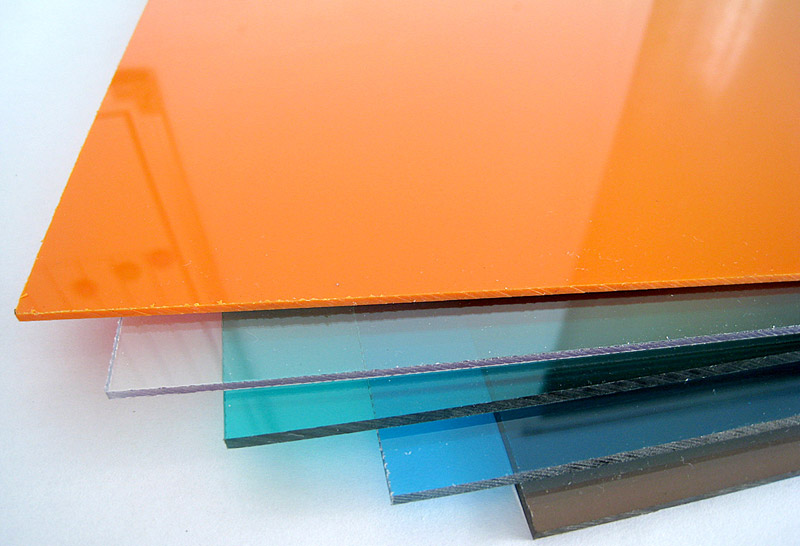
Direct panels (transparent or color).
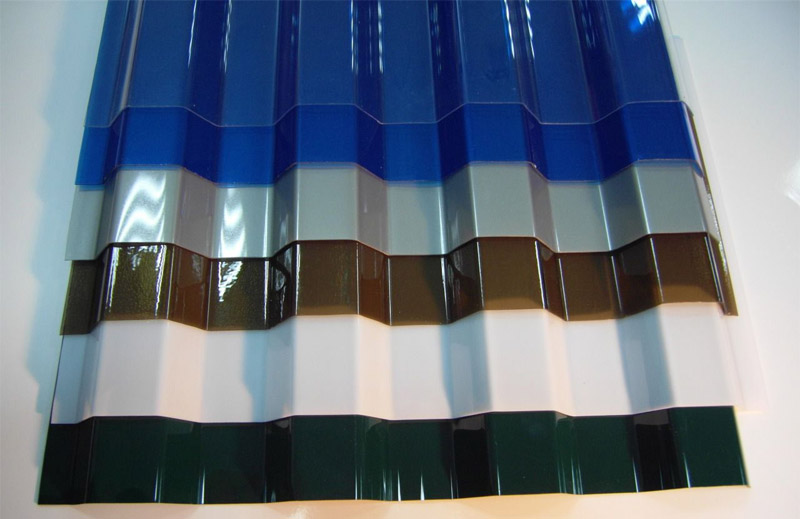
Profiled wave shaped panels. They have increased strength and are well combined with roofing profile materials (metal).
It should also be noted that monolithic polycarbonate is made of various grades - it is easier to choose the most suitable for a specific purpose.
Some of them:
- PK-5 - is positioned as a material used for medical purposes.
- PK-6 is a polymer with high light transmission. It is used in lighting engineering, as well as in optics (for the manufacture of instrument parts).
- PK-M-1 - material with minimal friction.
- PK-M-2 is the only material on the globe that resists cracking and is not afraid of fire.
- PK-LT-18-m (formerly called PK-4) is a black material with high thermal stability.
- PK-LST-30 (formerly known as PK-NKS and PK-LSV-30) is a polymer filled with silicon or quartz glass.
- PK-TS-16-OD - this marking shows that polycarbonate is not afraid of flames and extremely high temperatures. Use it where fire safety is important.
- RS-010 (formerly PK-3 or PK-LT-12) is a plastic whose viscosity is very low.
- RS-003 and RS-005 (formerly PK-1) - on the contrary, materials with a sufficiently high viscosity.
- RS-007 (available in place of PK-LT-10 and PK-2) is a material with an average viscosity.
Polycarbonate Sheet Sizes
It is worth remembering that the standard size of a polycarbonate sheet, like the structure, depends on its type.
Sizes of cellular polycarbonate
For cellular polycarbonate, the width of all sheets is the same - 210 centimeters, except for sheets having a thickness of more than 2 cm, they can be made 2.5 cm thick. And the length can be either 12 meters or 6. A six-meter sheet 0.4 cm thick weighs about 10 kilograms. , with a density of polycarbonate of about 800 grams per square meter. The thickness of the material can be from 0.5 to 2.5 centimeters.
| Specifications | Units measuring | Parameters | |||||||
|---|---|---|---|---|---|---|---|---|---|
| Sheet thickness | mm | 4 | 6 | 8 | 10 | 16 | 16 | 20 | 25 |
| The number of layers (walls) | 2H | 2H | 2H | 2H | 3X | 3H | 6H | 5X | |
| Honeycomb structure |  |
 |
 |
 |
 |
||||
| Distance between stiffeners | mm | 6 | 6 | 10,5 | 10,5 | 25 | 16 | 20 | 20 |
| Sheet width | m | 2,1 | 1,2 | ||||||
| Minimum bending radius | m | 0,7 | 0,9 | 1,2 | 1,5 | 2,4 | 2,4 | 3,0 | Not recommended |
| Sheet weight | kg / m2 | 0,8 | 1,3 | 1,5 | 1,7 | 2,5 | 2,8 | 3,1 | 3,4 |
| Panel Length | mm | 6000 and 12000 (deviation from the nominal size of 1.5 mm for transparent sheets and 3 mm for color is allowed) |
|||||||
* Depending on the manufacturer, these parameters may vary in one direction or another.
Sizes of monolithic polycarbonate
The length of one standard sheet of monolithic polycarbonate is 305 cm, and the width is 205 cm. The thickness of the products, as a rule, is from 0.2 to 0.6 centimeters. It is possible to purchase thicker sheets (from 0.8 to 1.2 centimeters) on request.
Types of polycarbonate by color
Once again, we will separately consider cellular and monolithic materials. Note that in both cases, coloring is performed throughout the volume, therefore, over time, colored products do not lose the saturation of the shades. You will have to pay extra for colored sheets — five percent, no more.
Cellular Polycarbonate
The following color variations exist:
Monolithic sheets
As in the previous version, fully transparent, bronze and milky-colored sheets are produced (the latter are matte). There is also a pure white (opal) variation. In color are present:

